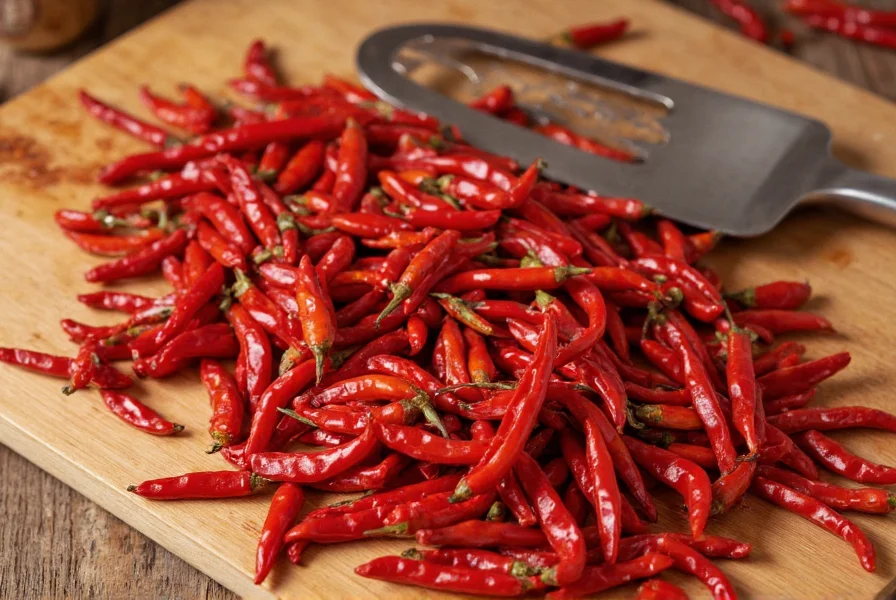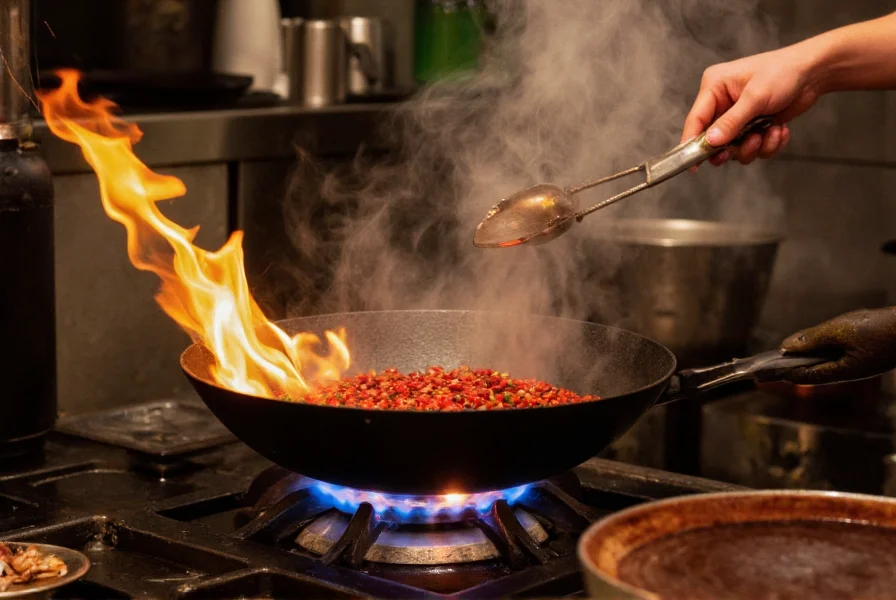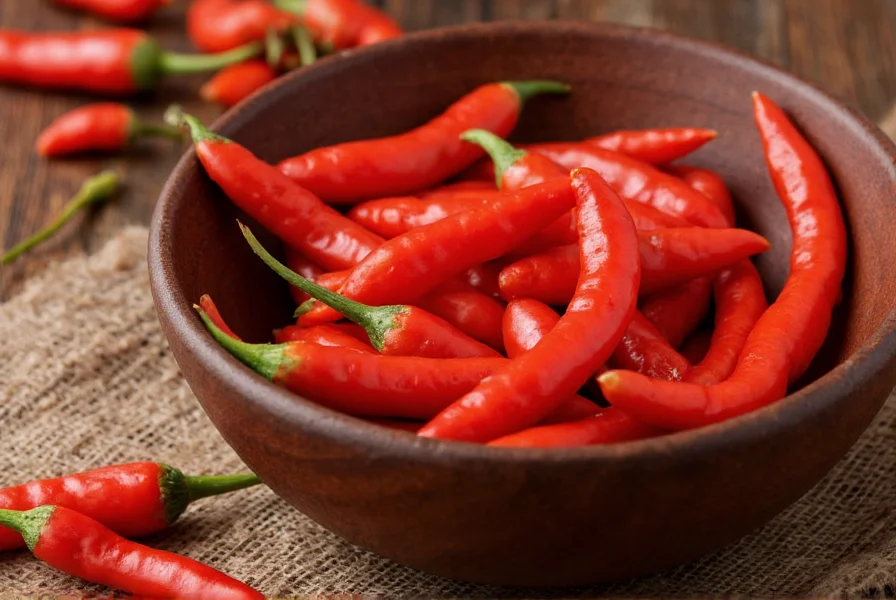When exploring authentic Chinese cuisine, understanding the various types of chilies used is essential for capturing the complex flavor profiles that define regional dishes. Many Westerners mistakenly believe "Chinese chili" refers to a single specific pepper, but Chinese culinary traditions actually incorporate multiple chili varieties, each contributing unique heat levels and flavor characteristics to regional specialties.
Primary Types of Chinese Chili Peppers
Chinese cooking utilizes several distinct chili varieties, with dried red chilies forming the backbone of many spice blends and cooking techniques. The most commonly used types include:
| Chili Variety | Region of Origin | Scoville Heat Units | Flavor Profile | Common Culinary Uses |
|---|---|---|---|---|
| Er Jing Tiao | Sichuan Province | 15,000-30,000 | Fruity, slightly sweet with moderate heat | Chili oil, mapo tofu, Sichuan hot pot |
| Facing Heaven Chili (Chao Tian Jiao) | Hunan Province | 50,000-100,000 | Intense heat with earthy notes | Dry-fried dishes, steamed fish, Hunan-style chicken |
| Lao Gan Ma Chili | Commercial blend | Varies by brand | Garlicky, fermented, complex | Condiment, stir-fry base, dipping sauce |
| Xiao Mi La | Yunnan Province | 50,000-75,000 | Sharp, immediate heat with citrus notes | Yunnan rice dishes, soups, dipping sauces |
Regional Differences in Chinese Chili Usage
China's vast geography creates distinct regional approaches to chili usage. Understanding these differences helps explain why "Chinese chili" encompasses multiple varieties rather than a single standardized pepper.
Sichuan cuisine focuses on the mala sensation—numbing (ma) from Sichuan peppercorns combined with heat (la) from chilies. Er Jing Tiao chilies provide the characteristic moderate heat that allows the complex numbing sensation to shine through. Sichuan chefs often use whole dried chilies toasted in oil to create the base for iconic dishes like mapo tofu and kung pao chicken.
Hunan cuisine, by contrast, embraces straightforward, intense heat. Hunan chefs favor facing heaven chilies (so named because they grow pointing upward on the plant) which deliver a more aggressive, immediate burn. Hunan dishes typically feature fresh and dried chilies used more liberally than in Sichuan cooking, creating what many describe as "sweat-inducing" heat levels.
Other regions like Yunnan incorporate chilies differently still, often combining them with local herbs and ingredients to create unique flavor profiles that differ significantly from both Sichuan and Hunan approaches.
Authentic Chinese Chili Preparation Techniques
Proper preparation makes all the difference when working with Chinese chilies. Unlike Western approaches that often focus solely on heat, Chinese culinary tradition emphasizes drawing out the chilies' complex flavor notes.
For dried red chilies, the traditional preparation involves:
- Removing stems and seeds (for milder heat)
- Soaking in warm water for 10-15 minutes to rehydrate
- Tempering in cold oil before heating to extract maximum flavor
- Removing chilies before they burn to prevent bitterness
Many home cooks make homemade chili oil by slowly infusing oil with toasted Sichuan peppercorns, star anise, and dried chilies—a technique that captures the essence of Chinese chili usage far better than store-bought alternatives. The quality of chili oil directly impacts the authenticity of many Chinese dishes.

Common Misconceptions About Chinese Chili
Several misconceptions persist about Chinese chilies that can lead to inauthentic results:
- "Chinese Five Spice contains chili" – This popular spice blend actually contains no chili; its five components are star anise, cloves, Chinese cinnamon, Sichuan peppercorns, and fennel seeds.
- "All Chinese food is extremely spicy" – While certain regions embrace heat, many Chinese dishes contain no chili at all, focusing instead on delicate balances of sweet, sour, salty, and umami.
- "Any red chili pepper works as a substitute" – The unique flavor profiles of Chinese chili varieties mean substitutions often fail to capture authentic taste, though guajillo or ancho chilies can work in some applications.
Where to Find Authentic Chinese Chili Varieties
Locating authentic Chinese chili varieties requires knowing what to look for. Specialty Asian markets typically carry:
- Dried Er Jing Tiao chilies (look for deep red color and moderate size)
- Facing heaven chilies (smaller, brighter red, often sold in bulk)
- High-quality chili flakes made from single-origin Chinese chilies
When shopping, examine the chilies for uniform color and absence of moisture. Premium Chinese chilies should have a fragrant, slightly sweet aroma rather than mustiness. For those unable to find authentic varieties, online retailers specializing in Chinese ingredients offer reliable options for purchasing genuine Er Jing Tiao and facing heaven chilies.

Practical Applications in Home Cooking
Understanding how to properly incorporate Chinese chilies into your cooking makes a significant difference in achieving authentic flavors. For beginners, start with these practical tips:
- Toast dried chilies in a dry wok over medium heat for 1-2 minutes before use to enhance flavor
- Use whole dried chilies in braises and soups, removing them before serving
- Create a simple chili oil by steeping toasted chilies in peanut or vegetable oil
- Balance chili heat with black vinegar and sugar for authentic Sichuan flavor profiles
Remember that in Chinese cooking, chilies serve as a flavor component rather than merely a heat source. The goal is to achieve a harmonious balance where the chili enhances other ingredients rather than overwhelming them—a principle that defines authentic Chinese culinary tradition.











 浙公网安备
33010002000092号
浙公网安备
33010002000092号 浙B2-20120091-4
浙B2-20120091-4